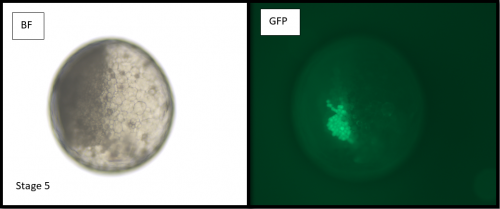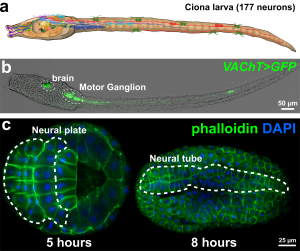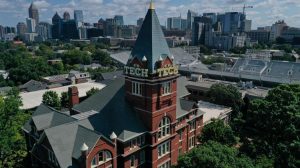BSDB Gurdon/The Company of Biologists 2019 Summer Studentship Report – Luca Argirò
Posted by BSDB, on 17 January 2020
Established by the British Society for Developmental Biology in 2014, The Gurdon/The Company of Biologists Summer Studentship scheme provides financial support to allow highly motivated undergraduate students an opportunity to engage in practical research during their summer vacation. Each year, ten successful applicants spend eight weeks in the research laboratories of their choices, and the feedback we receive is outstanding. You can read accounts from previous years here. If you’re interested in applying or hosting a student in 2020, applications need to be in by the end of March.
Our fourth report from the class of 2019 comes from Luca Argirò (University of Rome Sapienza) who studied plant symmetry in Laila Moubayidin’s lab at the John Innes Centre.
How to get radial: Unlocking the mechanisms for symmetry establishment across plant organs
The development of multicellular organisms depends on correct establishment of symmetry both at the whole-body scale and within individual tissues and organs. Setting up planes of symmetry must rely on communication between distant cells within the organism, presumably via mobile morphogenic signals. Although symmetry in nature has fascinated scientists for centuries, it is only now that molecular data to unravel mechanisms for symmetry establishment are beginning to emerge.
Over the summer, I had the opportunity of conducting a research project at the John Innes Centre (JIC) working under the supervision of Dr Laila Moubayidin, whilst participating in the amazing JIC/TSL/EI International Undergraduate Summer School.
Dr Moubayidin’s research looks at identifying a conserved “core machinery” necessary and sufficient to control symmetry establishment across plant organs. She is elucidating the underlying process of symmetry establishment at the cellullar, molecular and genetic level.
Unlocking the molecular mechanisms that underpin this regulation holds potential for understanding the processes that allow plant organs to reach their perfectly-optimized shape and function.
The project I worked on focused on gynoecium (the plant female reproductive structure) development, using Arabidopsis thaliana as a model system.
The gynoecium forms in the centre of the flower and it is derived from the fusion of two carpels. The gynoecium includes the ovary, which displays bilateral symmetry, and the style, at its apex, characterized by radial symmetry (Figure 1). The ovary is important for seeds production and the style is important for fertilization.

During its development, the distal end of the gynoecium becomes radially symmetric via a switch from bilateral to radial symmetry. Symmetry transitions are common during embryogenesis in all multicellular organisms. In most cases, the transition is from radial to bilateral symmetry, which is controlled by Hox and decapentaplegic genes in animals. The A.thaliana gynoecium, instead, is the only molecularly documented example of a developing structure that reprograms its development over time to achieve a bilateral-to-radial symmetry transition.
Growing evidence shows that coherent organ growth and symmetry establishment during organogenesis are influenced by post-translational modifications of specific nuclear and cytoplasmatic proteins. My project focused on the role of O-linked N-acetylglucosamine modification during gynoecium development. O-GlcNAcylation is a post-translational modification that consists of a single O-linked N-acetylglucosamine attached to either a serine or a threonine residue. It has been extensively studied in animals, where it regulates a wide range of developmental and metabolic processes.
O-GlcNAcylation is dynamically controlled by two enzymes: an O-GlcNAc transferase (OGT) and an O-GlcNAcase (OGA), which add and remove O-GlcNAc, respectively. O-GlcNAcylation occurs in the cytoplasm, nucleus and mithocondria, and it is implicated in cellular processes, including transcription, translation, signal transduction, nuclear pore function, epigenetic regulation and proteosomal degradation. Altered levels of protein O-GlcNAcylation in animals have been associated with neurodegeneration, diabetes, cardiovascular diseases and cancer.
Arabidopsis thaliana has two putative OGTs: SPINDLY (SPY) and SECRET AGENT (SEC) whose role is essential for plant development, since spy;sec double mutant is embryionically lethal, similar to the OGT knockout mutant in animals.
Exploring this interesting and at the same time quite complicated topic, gave me the chance of learning and mastering a wide range of molecular biology techniques, such as cloning and Yeast-two-Hybrid. It was amazing to experience practical methods and protocols I had studied during university courses in Rome and to understand how much work, attention to detail and care there is behind even repetitive actions (Figure 2).

Using the state-of-the-art JIC microscopy facilities, I had the opportunity to look at wild-type and mutant Arabidopsis gynoecia at different developmental stages using Scanning Electron Mycroscopy (SEM). Fixing samples for SEM analysis, dissecting flowers and using machines such as the Critical Point Dryer and the Gold Sputter Coater was a challenging experience, but the final result was worth the hard work. I was astonished whilst I was conducting SEM analysis as it allows observation of samples at incredible magnifications, providing details of a single cell surface (Figure 3).
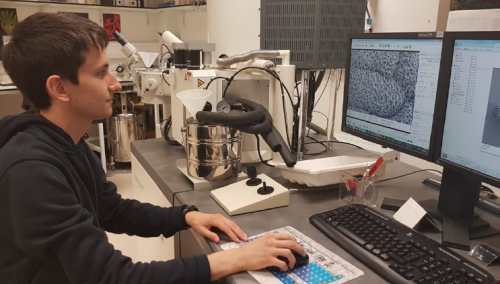
At the end of this experience, I felt extremely grateful for several reasons.
Firstly, I greatly enhanced my knowledge of plant developmental biology. As a “Sapienza School for Advanced Studies” student, in the first year of university, I was keen to work on plants during my Research Project, so I applied to the International Undergraduate Summer School at the JIC. After being selected, I was urged by Dr Moubayidin to apply for a Gurdon/The Company of Biologists Summer Studentship offered by the British Society for Developmental Biology (BSDB). Moreover, working side-by-side an experienced, young principal investigator, such as Dr Moubayidin, has been a rare opportunity and a great inspiration for my future career. Dr Moubayidin has been recently appointed a prestigious Royal Society University Research Fellowship, therefore it has been an exciting time to be part of her lab, experiencing how a research group is built and the importance of teamwork.
Lastly, this summer placement has given me great insight into research career paths and has made me even more aware of how incredibly surprising and stimulating daily lab life can be. Each workshop organized by the JIC Summer School and every seminar held at the JIC has been a great chance for me to learn about new topics, uncovering the research world of an international centre and the beauty of working in a collaborative and stimulating atmosphere.
Altogether, this unexpected chain of events has lead me to immensely broaden my scientific and transferable skills, as well as my perspectives, not only as a scientist, but also as a “world citizen”. This Summer School experience, set in the incredibly positive environment of the JIC, has reaffirmed my desire of pursuing a career in science, despite all the hard work it actually requires. I wholeheartedly recommend the Gurdon/BSDB Summer Studentship and the possibility to carry on research abroad during university studies, visiting new countries and encountering new cultures. I believe every undergraduate student should be made aware of unique opportunities, like this, available to them.
References
- Moubayidin L., Østergaard L., Dynamic control of auxin distribution imposes a bilateral-to-radial symmetry switch during gynoecium development, Current Biology 24, 2743-2748, (2014).
- Moubayidin L., Østergaard L., Symmetry matters, New Phytologist (2015).
- Shou-Ling Xu, Robert J. Chalkley, Jason C. Maynard, Wenfei Wang, Weimin Ni, Xiaoyue Jiang, Kihye Shin, Ling Cheng, Dasha Savage, Andreas F. R. Hühmer, Alma L. Burlingame, and Zhi-Yong Wang, Proteomic analysis reveals O-GlcNAc modification on proteins with key regulatory functions in Arabidopsis, PNAS 114 (8) E1536-E1543, (2017)



 (No Ratings Yet)
(No Ratings Yet)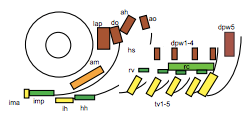
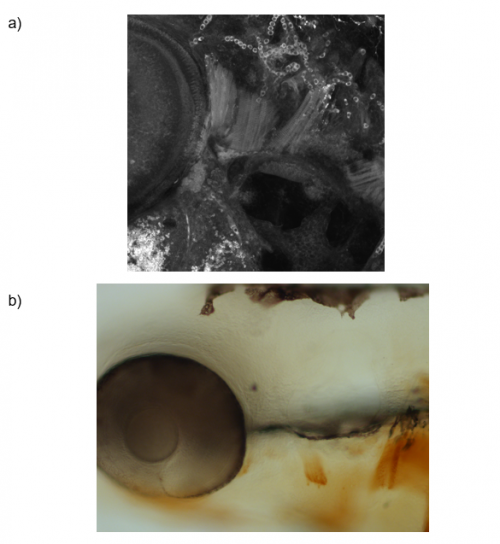

 (1 votes)
(1 votes)